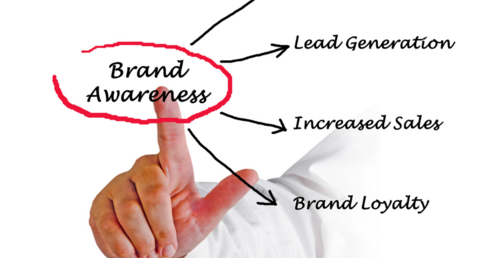
What is the Difference Between Digital Marketing and Inbound Marketing?
(1).png)
If you're just here for quick definitions, we got you. Digital Marketing is any kind of marketing that happens on a digital platform. Whether it's on your website, your social media, or through email, it's digital marketing. Inbound Marketing is a specific marketing methodology. It's a way to market (usually using digital marketing tactics) that draws in qualified leads, rather than blasting a message out to a mass audience.
Got it? Great. Keep on reading if you're not quite there yet.
There's a lot of jargon that comes with the world of online marketing. Terms like SEO, inbound marketing, digital marketing, online marketing, PPC, conversion, and calls-to-action can be tricky if you're not used to the industry, and even if you are, there are some vocab words that don't seem all that different.
The difference between these two types of marketing can be confusing.
Many people use the terms interchangeably, but in fact, they refer to different types of marketing, and do different things. So, if you've been wondering what the difference actually is between digital marketing and inbound marketing, we're going to break it down for you:

The term digital marketing functions as a sort of catch-all for any marketing tactic that's done on a digital medium. So, things like search engine optimization, website banners, social media campaigns, are all examples of individual digital marketing tactics.
While there's a lot to be done with digital marketing, the term itself doesn't imply any sort of strategy. Think of it more like a toolbox that contains all of the marketing tools you can use to increase brand recognition, get more traffic, and be seen online.

Unlike digital marketing, inbound marketing is a clear, defined marketing strategy that has precise steps and best practices. While an inbound marketing strategy does make use of a lot of digital marketing tactics, like blogging and improving SEO, it's a set methodology that works to draw in qualified visitors, and generate leads.
It's an ongoing, holistic strategy that encompasses a number of specific steps. We think of inbound marketing as a philosophy that works to put customers first, and digital marketing tactics help them to achieve that philosophy.

Now that you know what the differences are between digital marketing and inbound marketing, how do you know which option is best? Well, it depends on your goals.

If you're simply trying to grow your brand awareness, and get any old visitor to your website, a few different digital marketing tactics might help. Digital marketing tactics on their own work to solve short term goals, like boosting your Facebook page's reach, or increasing traffic to your website.
On the other hand, if you're trying to generate leads that convert to legitimate, qualified customers, inbound marketing tactics are probably a better choice.
While you can run a Facebook like campaign, or start pushing banner ads, those techniques by themselves will only produce results limited to those initiatives. A like campaign will certainly get you more likes, and banner ads might get more people to your site, but that's about it.

An inbound marketing strategy takes each of those digital marketing tactics, and folds them into a larger strategy that does something with the results of each tactic.
With an effective inbound marketing strategy, you create content that draws in qualified leads, you develop landing pages and calls-to-actions that capture the contact information of people who are interested in what you're offering, you deploy email campaigns relevant to those specific contacts, and in the end, you'll have created a full strategy that makes each of those digital marketing tactics work together to create a whole that's greater than the sum of its parts.
Once you have a complete inbound marketing strategy in place, it works long term to continue to deliver you qualified leads, and boost your conversion rates over time.

Choosing inbound marketing is like playing the long game; it leads to more solid, consistent results. Digital marketing is playing the short game, where you get immediate results, but they're not often worth as much in the long term.
In our opinion, the most effective way to leverage both of these is to use digital marketing tactics to drive your inbound marketing strategy. Implementing digital marketing tactics can help your inbound marketing strategy grow exponentially, drawing in more of the right leads in less time, and for a greater overall ROI.
In the end, it's up to you to determine what your goals are for your business's marketing strategy, and whether you choose inbound marketing or digital marketing.
Inbound marketing, or pull marketing, leverages content to attract and draw customers closer to the brand. Outbound marketing, or push marketing, uses content to interrupt customers during other activities. It takes longer to enjoy the results of inbound marketing, whereas results may come more quickly with outbound marketing.
Inbound marketing is promoting a company through blogs, podcasts, video, eBooks, enewsletters, whitepapers, SEO, social media marketing, and other forms of content marketing which serve to attract customers.
In contrast, buying attention, cold-calling, direct paper mail, radio, TV advertisements, sales flyers, spam, telemarketing and traditional advertising are considered "outbound marketing".
Get all the inbound marketing tools here at Markethive
.png)
About: Andries vanTonder (Over 40 years self-employed)
He is a Serial Entrepreneur, an Enthusiastic supporter of Blockchain Technology and a Cryptocurrency Investor
Find me at my Markethive Profile Page | My Twitter Account | My Instagram Acount | and my Facebook Profile.
